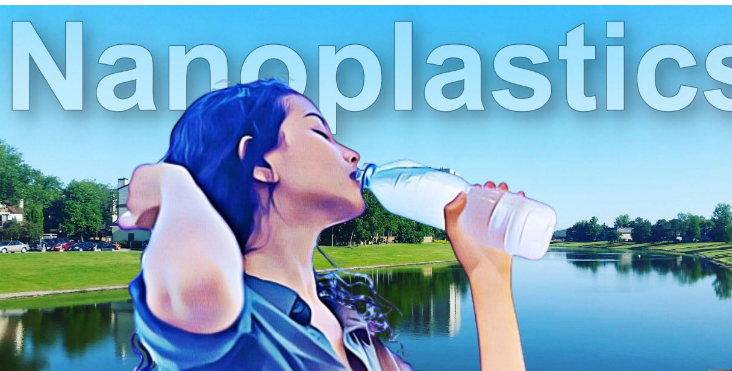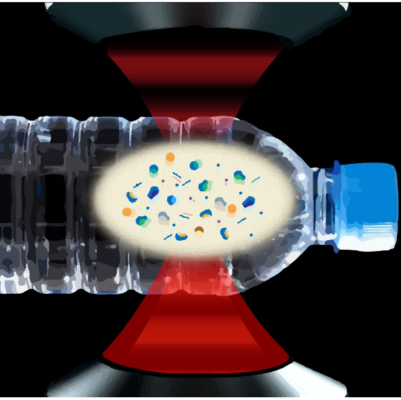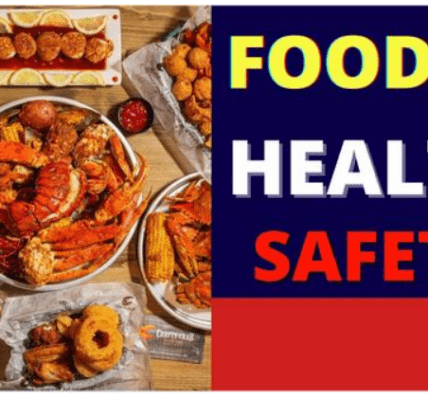Unveiling the Hidden Dangers of Nearly a Quarter Million Nanoplastics Per Bottle
In a disconcerting revelation, a recent study published in the Proceedings of the National Academy of Sciences (PNAS) has exposed the presence of nearly a quarter million “nanoplastics” in the average bottle of water. These microscopic plastic particles, measuring in billionths of a meter, are raising concerns about potential health risks, as they can infiltrate human cells and interfere with vital biological functions. The study sheds light on a largely unexplored realm of plastic pollution, introducing a new perspective on the hidden dangers lurking in our daily consumption of bottled water.
Understanding Nanoplastics:
While the prevalence of larger microplastics in the environment has been acknowledged, the study emphasizes the significantly smaller size of nanoplastics, making them challenging to measure. Nanoplastics, thousands of times smaller than microplastics, possess the ability to enter the bloodstream, cross cellular barriers, and disrupt crucial cellular functions. This raises the stakes for potential health impacts, as these minuscule particles may cause cellular malfunctions with far-reaching consequences.
The Study’s Methodology:
Utilizing an innovative laser imaging method, the researchers identified nanoplastics in bottled water, delving into a dimension of plastic pollution that was previously difficult to explore. By passing water from common brands through an ultrafine filter, the scientists trapped particles at a scale of billionths of a meter, providing a clearer understanding of the nanoplastic landscape. The study highlighted that the identified nanoplastics comprised only 10% of the total nanoparticles found, indicating the complexity of the issue and the presence of additional unknown contaminants.
Variety of Plastics and Unknown Sources:
The study identified a range of plastics present in bottled water, with polyethylene terephthalate (PET) being the most prevalent. While PET is commonly used in bottle structures and generally considered safe, the study revealed the presence of other potentially hazardous nanoplastics not originating from the bottles themselves. Compounds like nylon, polystyrene (commonly known as Styrofoam), and polyvinyl chloride (PVC) were identified, raising questions about unknown sources of environmental contamination.
Health Risks and Potential Impacts:
The chemical structure of plastics poses a particular concern, as it closely resembles the chemistry of living organisms. Nanoplastics have been associated with a wide array of health risks, including oxidative stress, inflammation, immune dysfunction, altered biochemical and energy metabolism, impaired cell proliferation, disrupted microbial metabolic pathways, abnormal organ development, and even carcinogenicity. The study emphasizes that while the precise health impacts of nanoplastics are yet to be fully understood, their presence in bottled water raises legitimate concerns, particularly for vulnerable populations such as the very young and the elderly.
The Blood-Brain Barrier and Pregnancy Risks:
One alarming revelation from the study is that nanoplastics are small enough to cross the blood-brain barrier. This poses a potential risk for neural degeneration, especially in the elderly, where the blood-brain barrier is less secure. Additionally, the study raises concerns about the impact of nanoplastics on developing fetuses, as these particles can cross the placenta. The potential effects on embryonic development, organ growth, and the nervous system underscore the need for further research into the long-term consequences of nanoplastic exposure during pregnancy.
Unknown Consequences and Urgent Research:
While the study provides a crucial first step in quantifying the exposure to nanoplastics in bottled water, there is still much to learn about the actual health consequences. The researchers emphasize the importance of toxicologists examining the identified levels of nanoplastics in bottled water to determine their potential impact on human health. The study prompts a call for urgent and comprehensive research to address the gaps in our understanding of nanoplastic toxicity and devise strategies to mitigate potential risks.
Read More News:
- Miraculous Reunion: Stolen Baby Found Safe in Washington, D.C.
- Draymond Green Returns: Golden State Warriors’ Defensive Maestro Reinstated After 12-Game Suspension
The revelation of nearly a quarter million nanoplastics per bottle of water adds a new layer of complexity to the plastic pollution crisis. As consumers become increasingly aware of the hidden dangers lurking in their everyday choices, the study underscores the need for heightened scrutiny of plastic usage and disposal. With the potential health risks associated with nanoplastic exposure, the findings warrant not only further research but also a collective effort to reduce plastic consumption and minimize environmental contamination. As scientists delve deeper into the microscopic realm of nanoplastics, the world awaits a clearer understanding of the long-term implications for human health and the environment.




